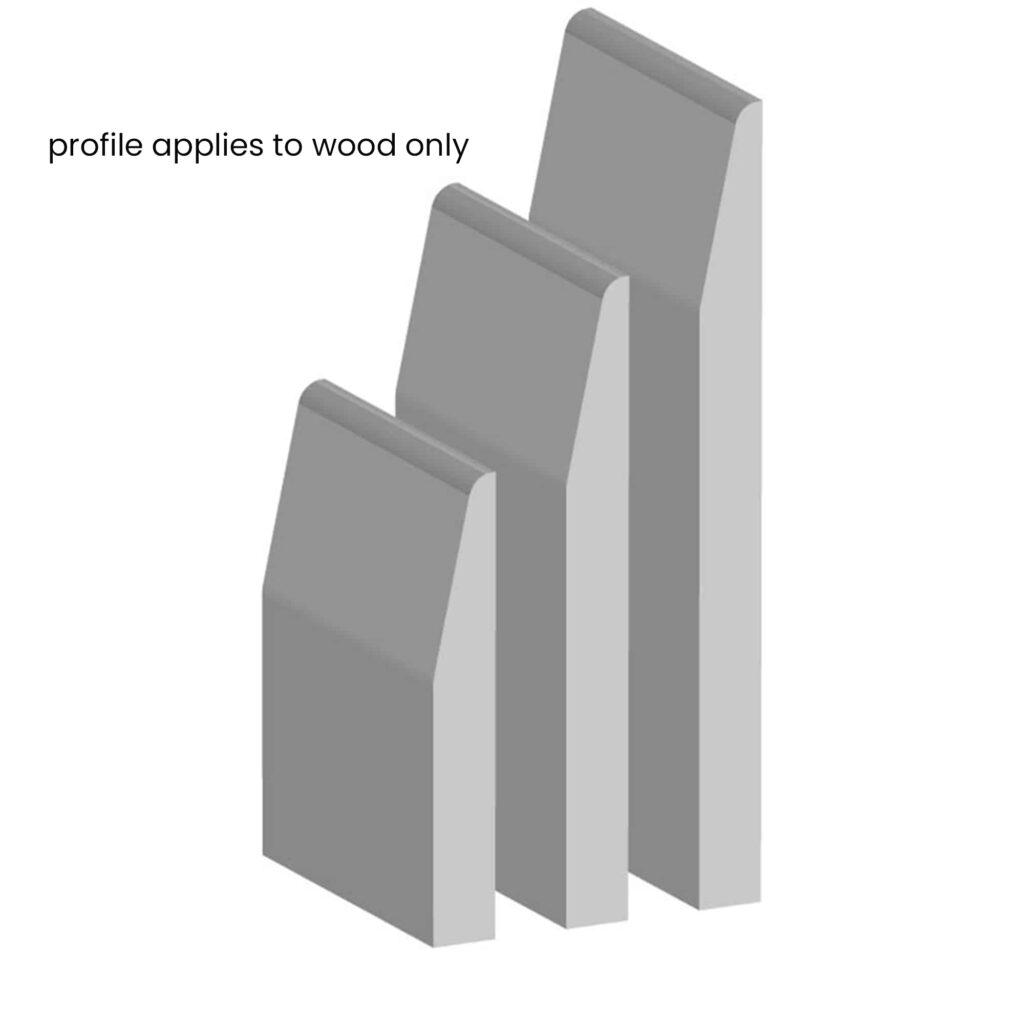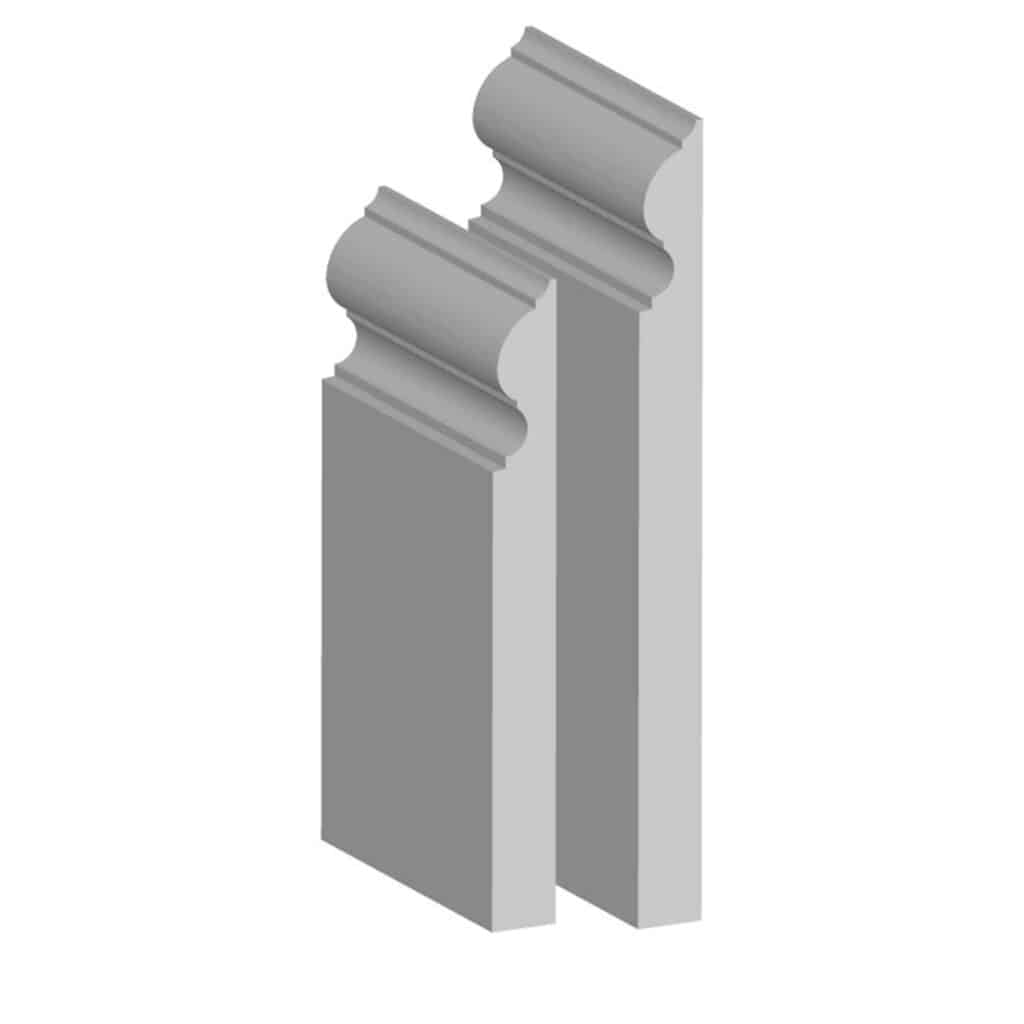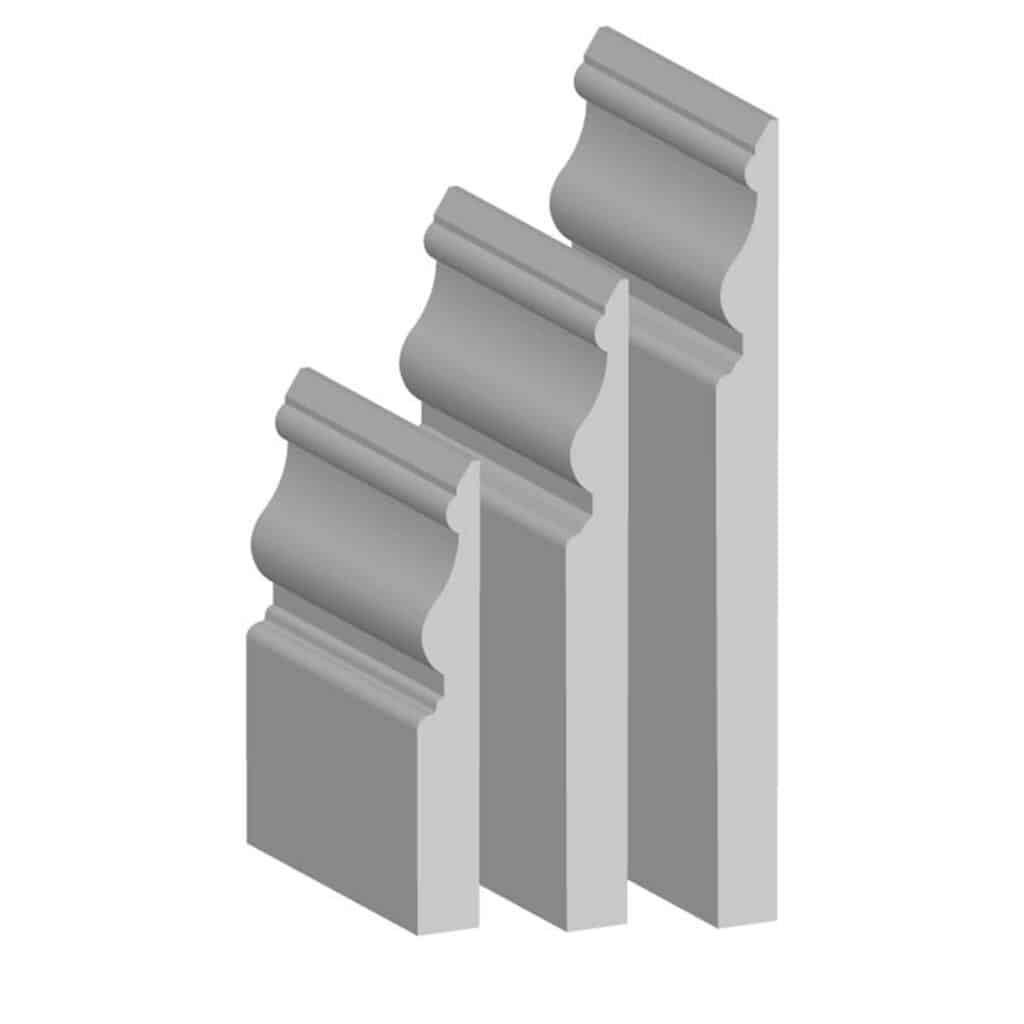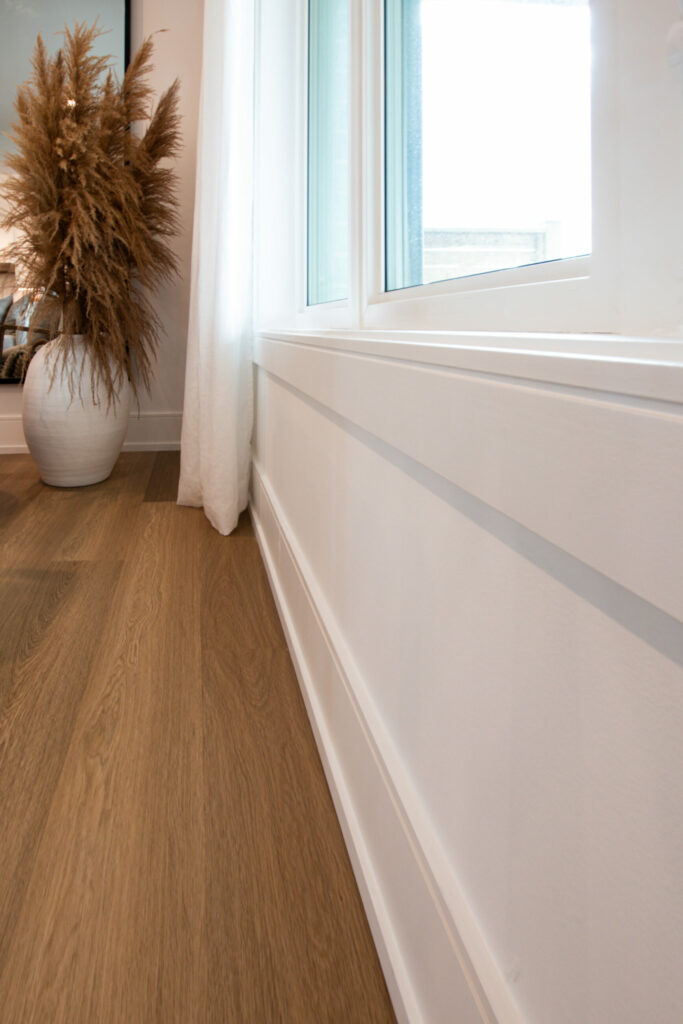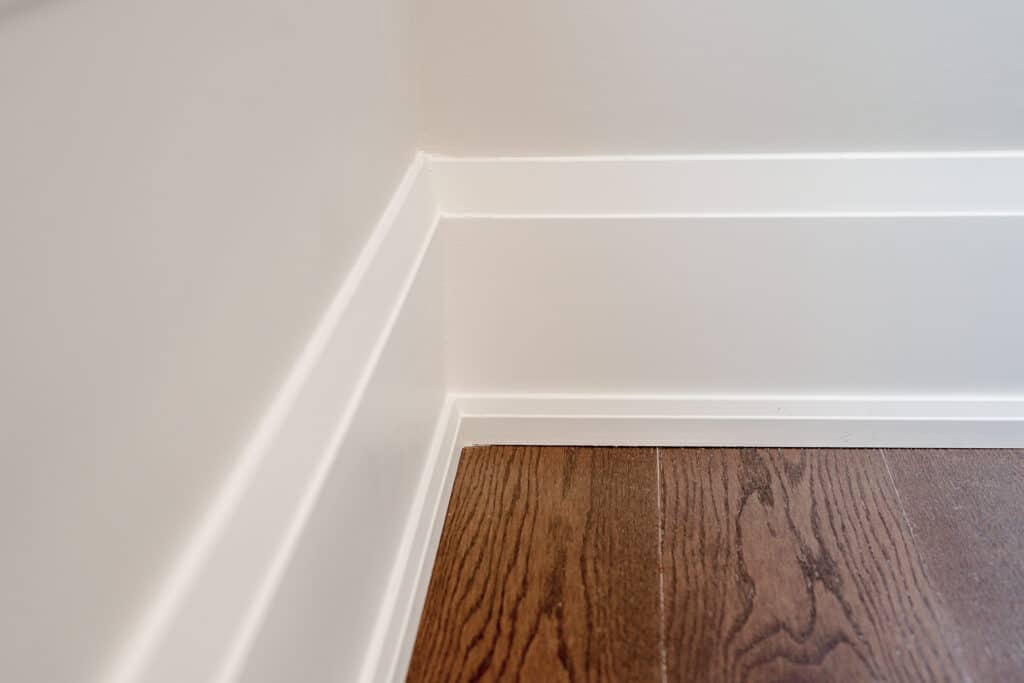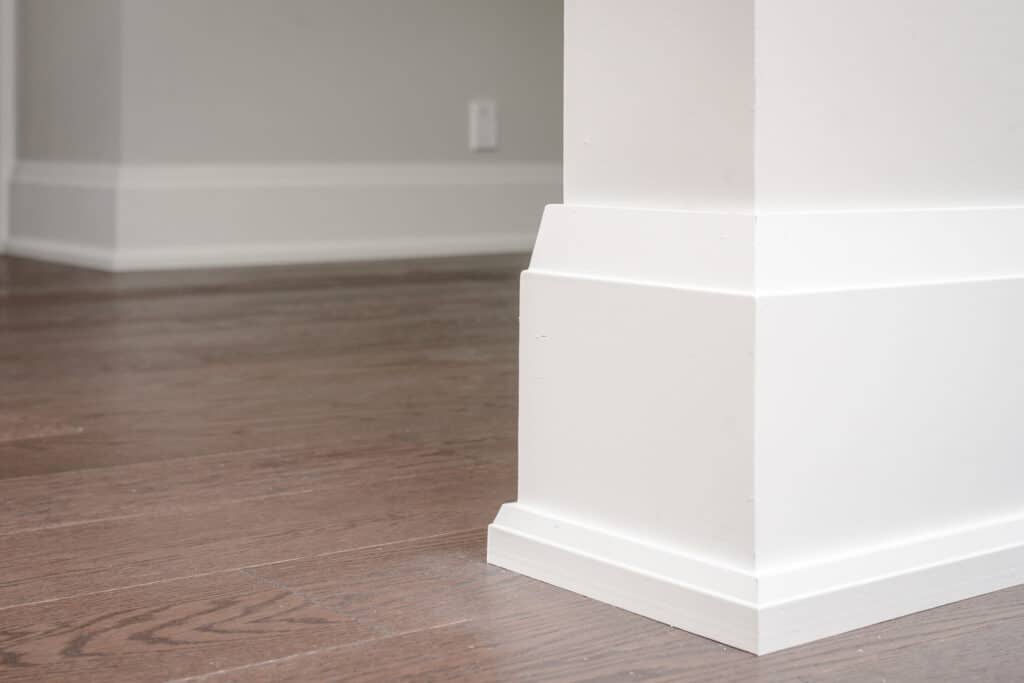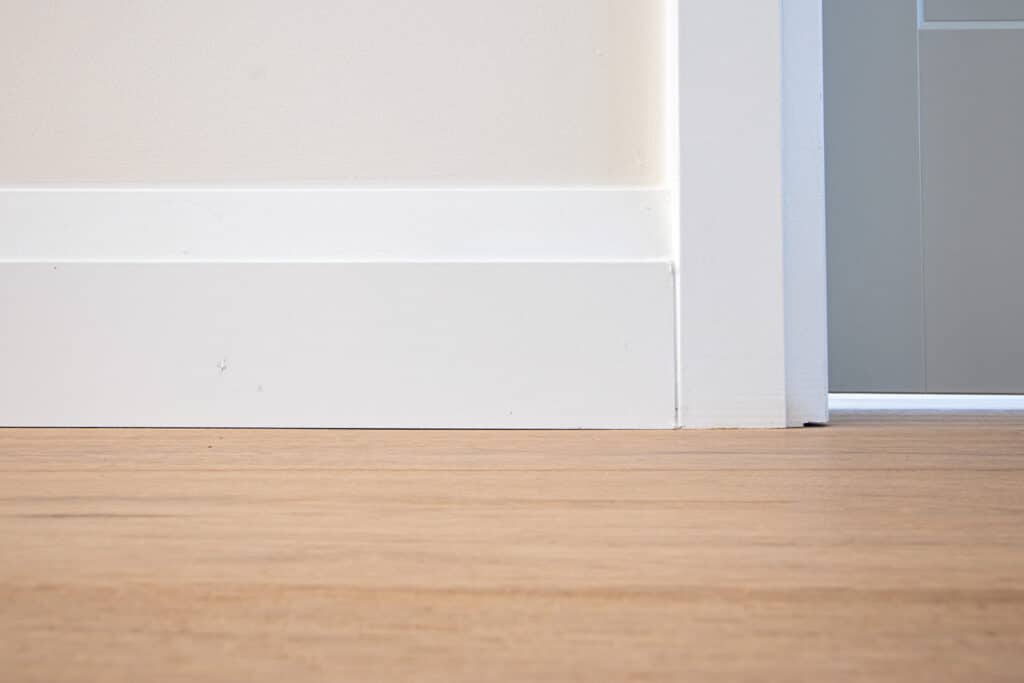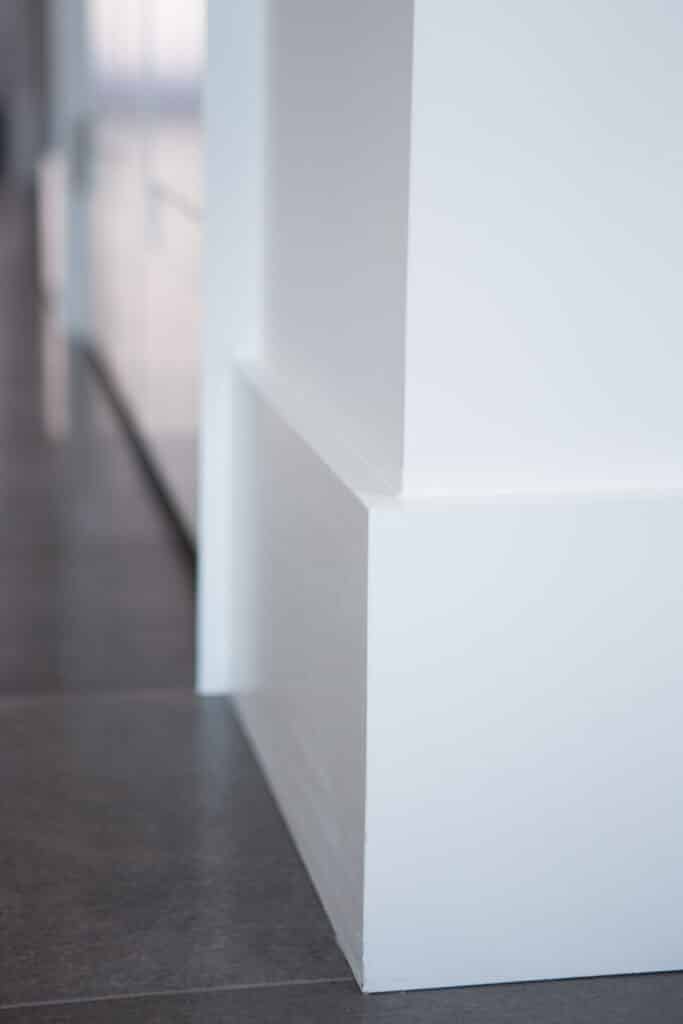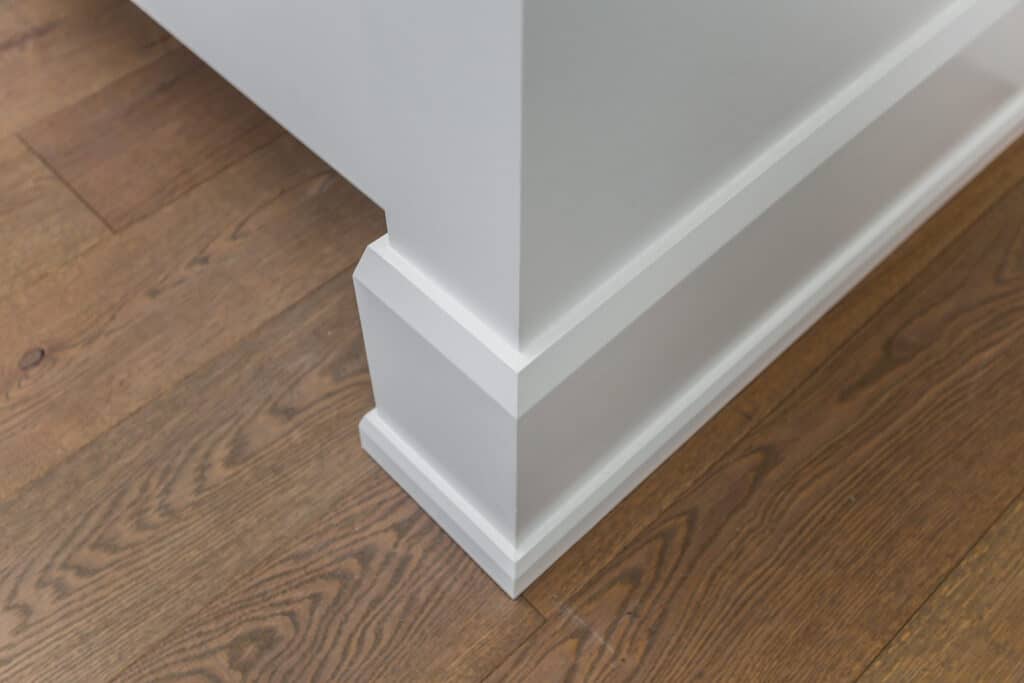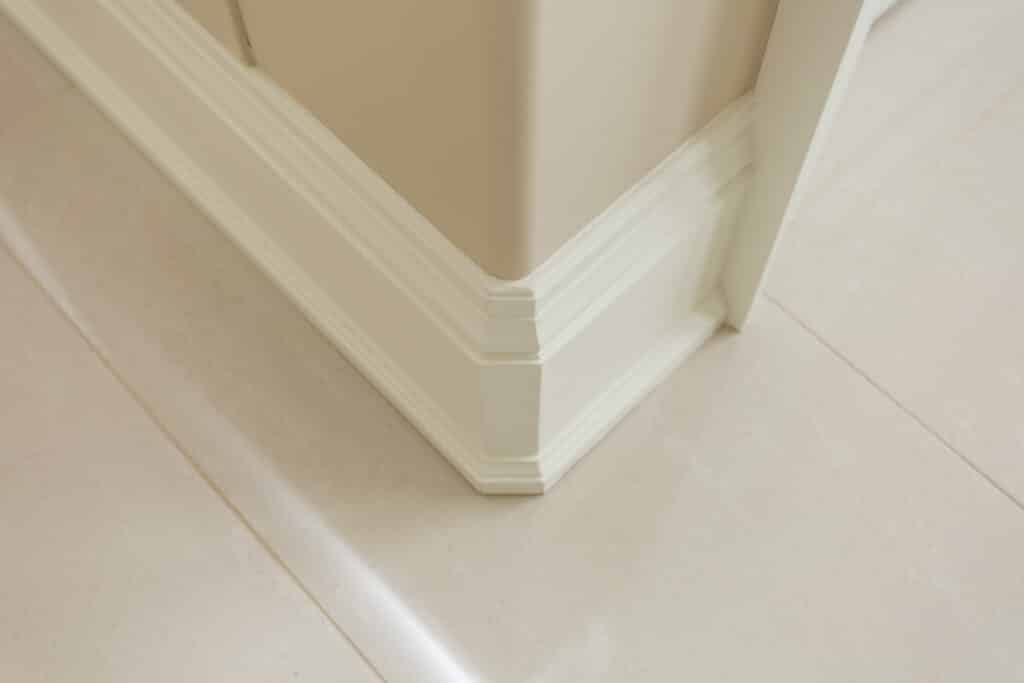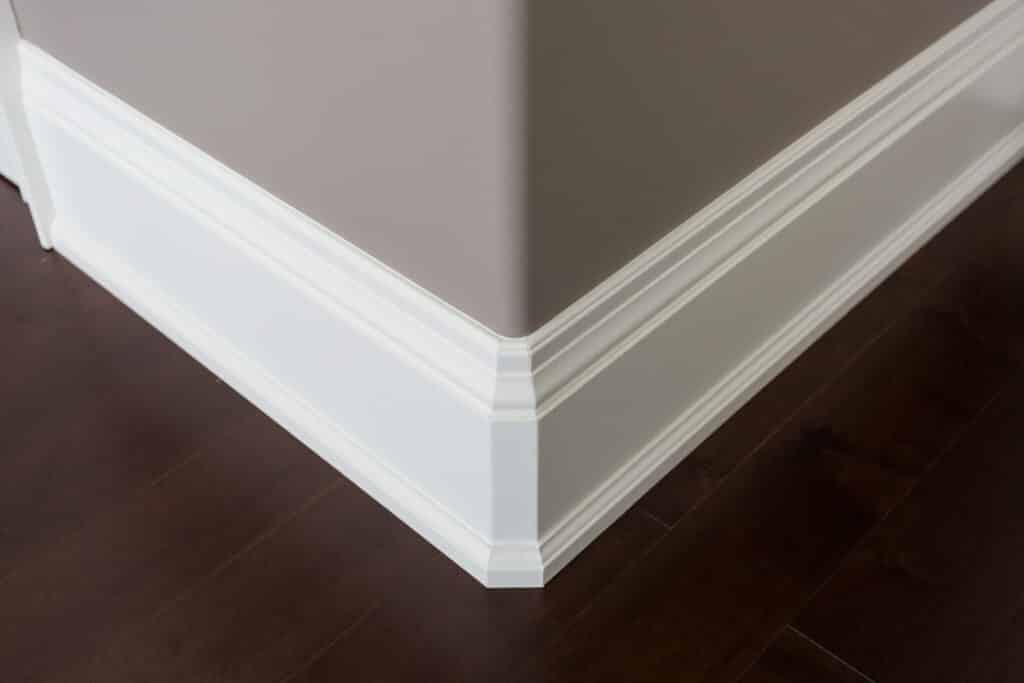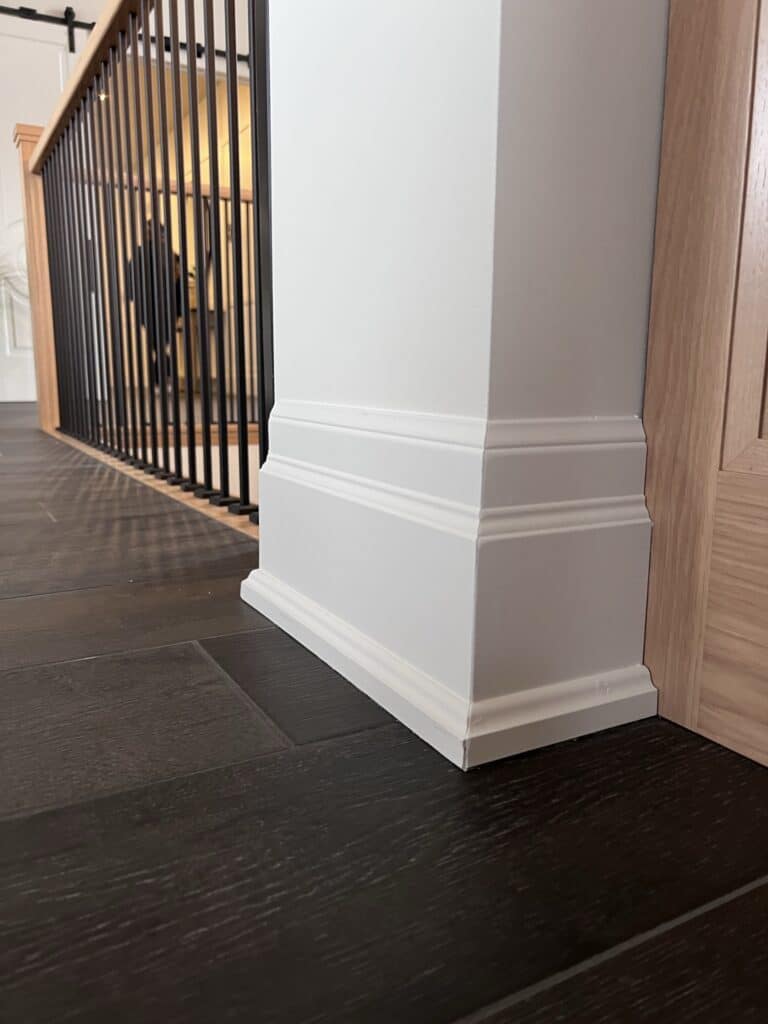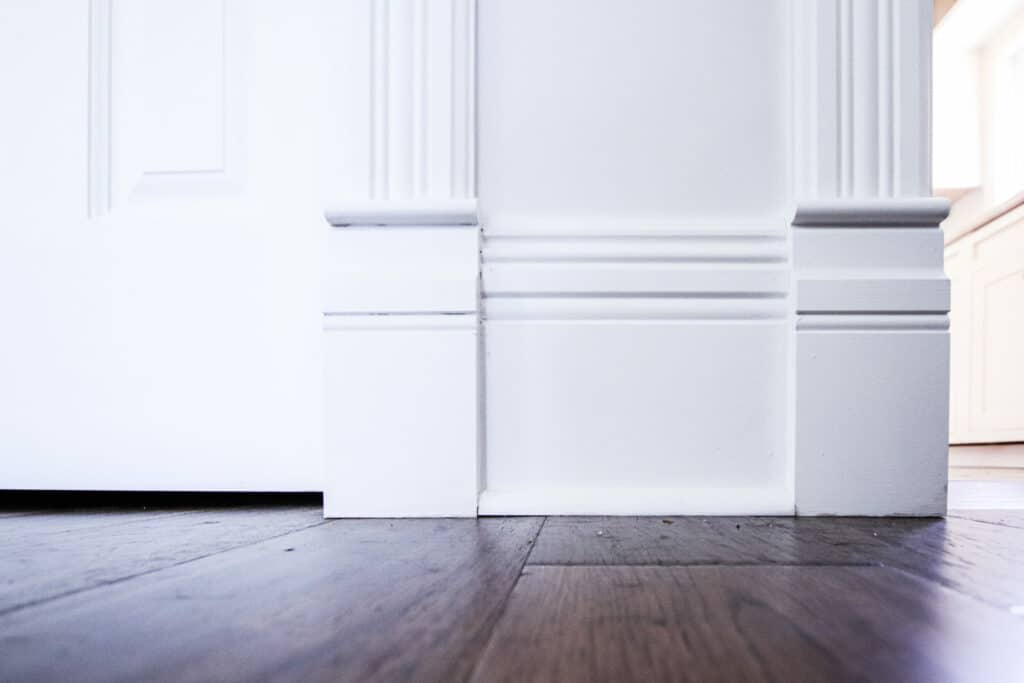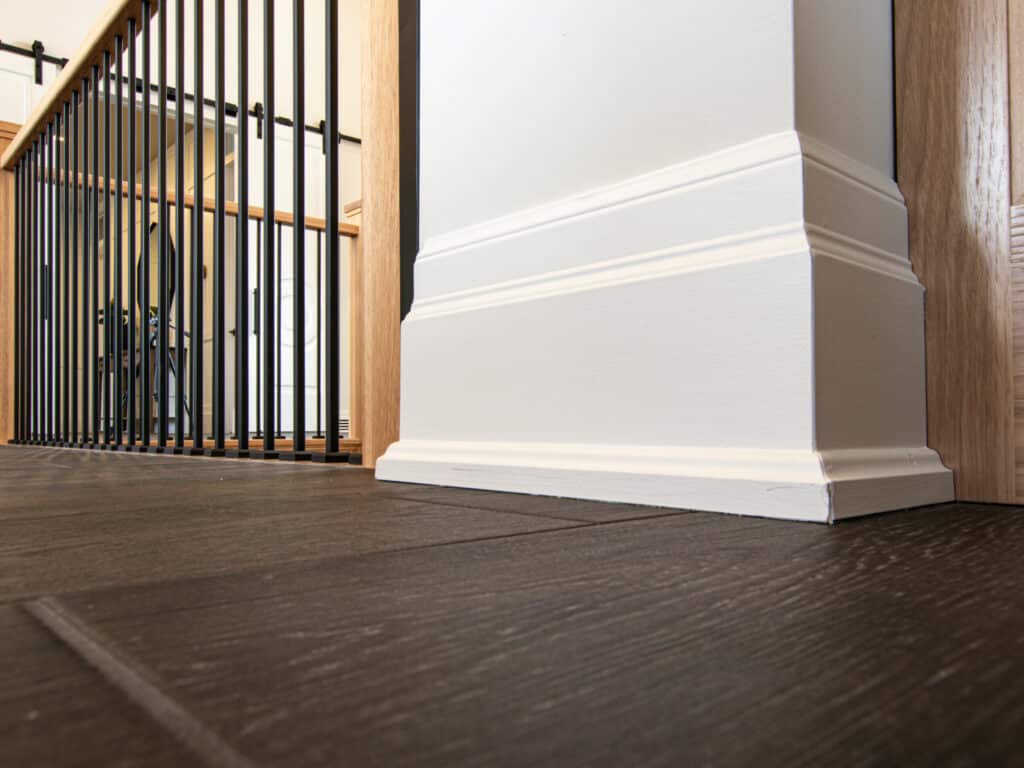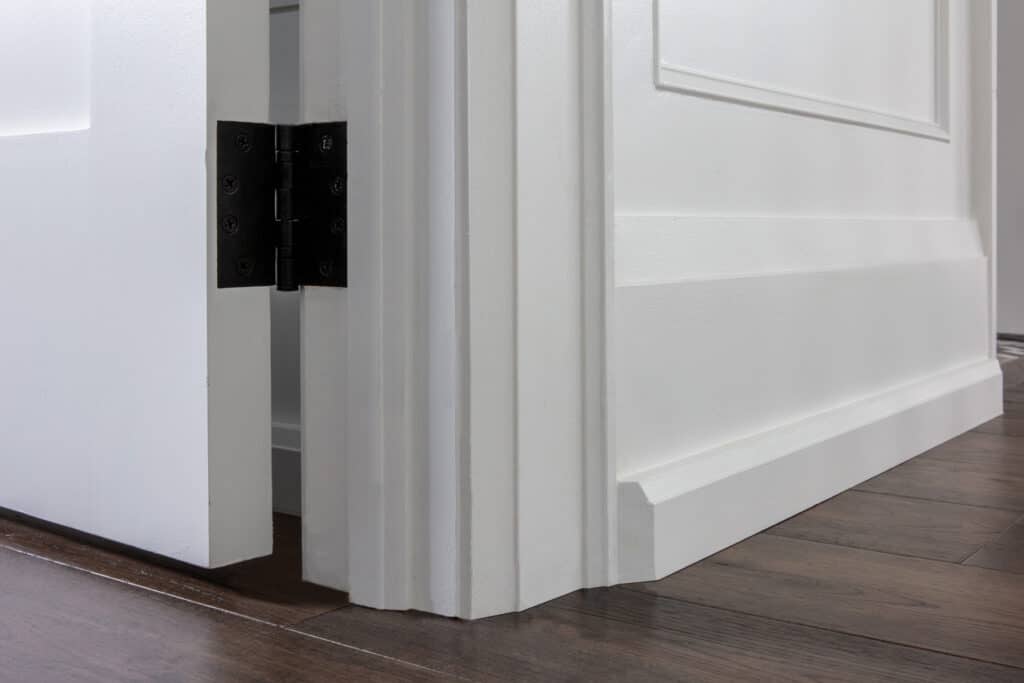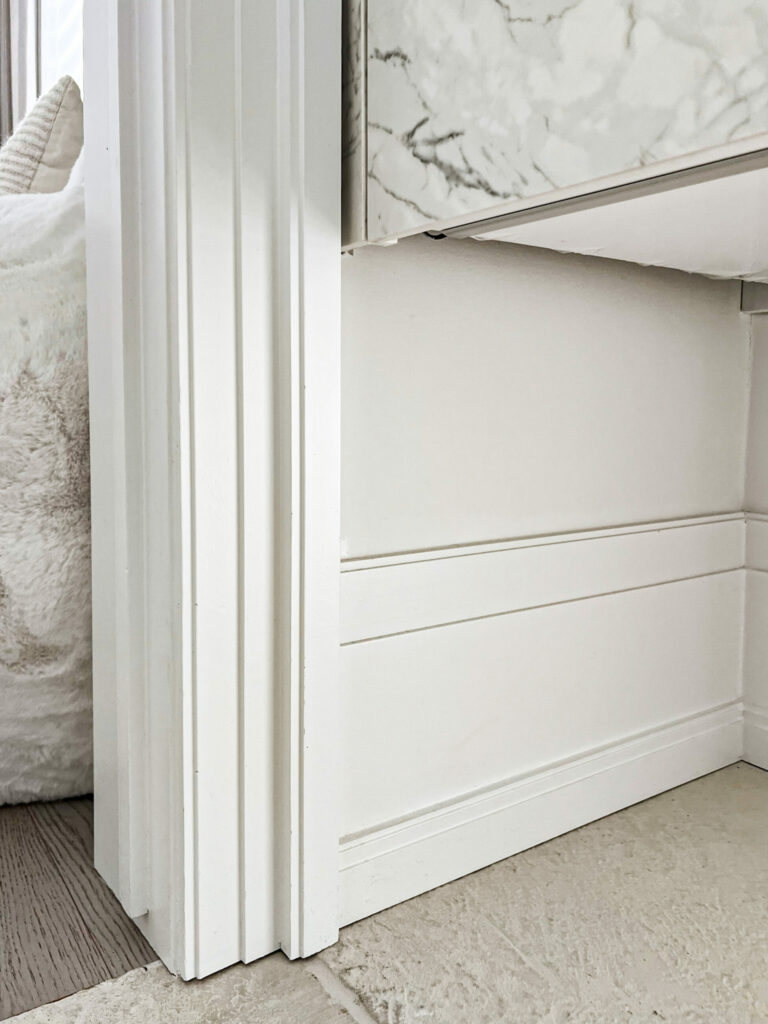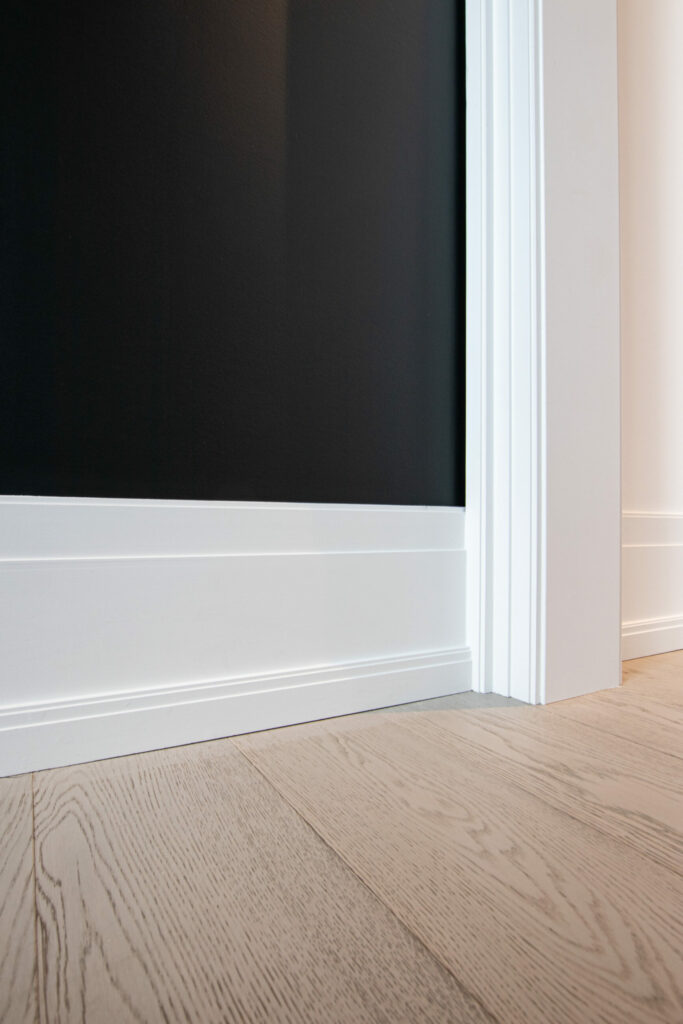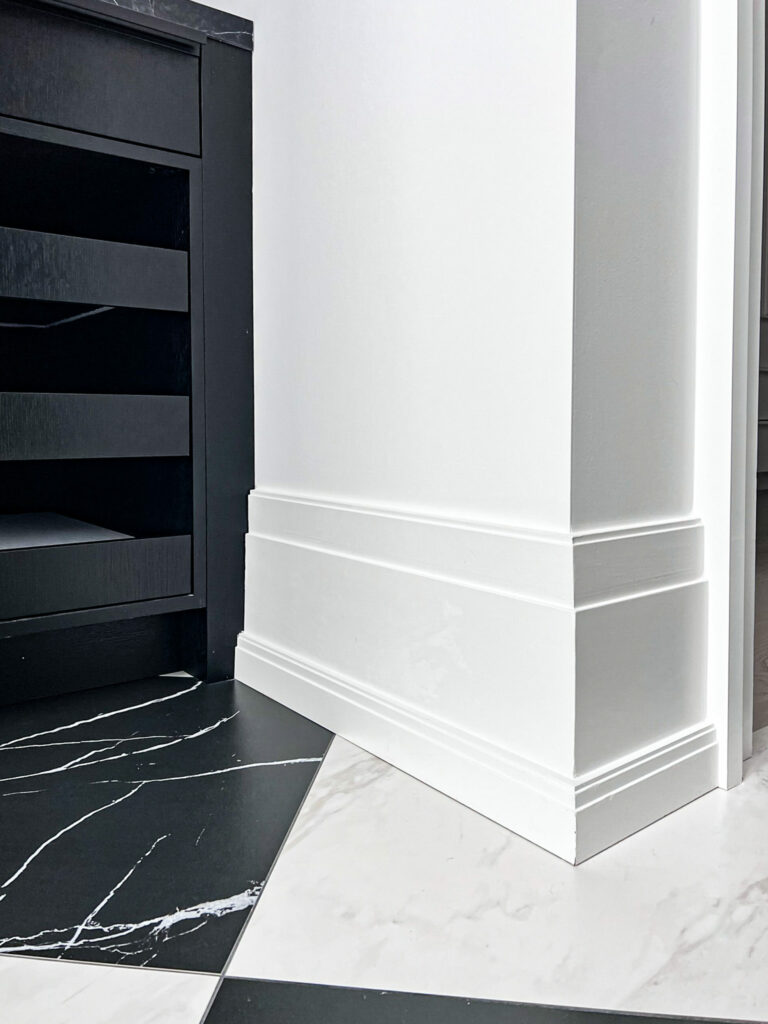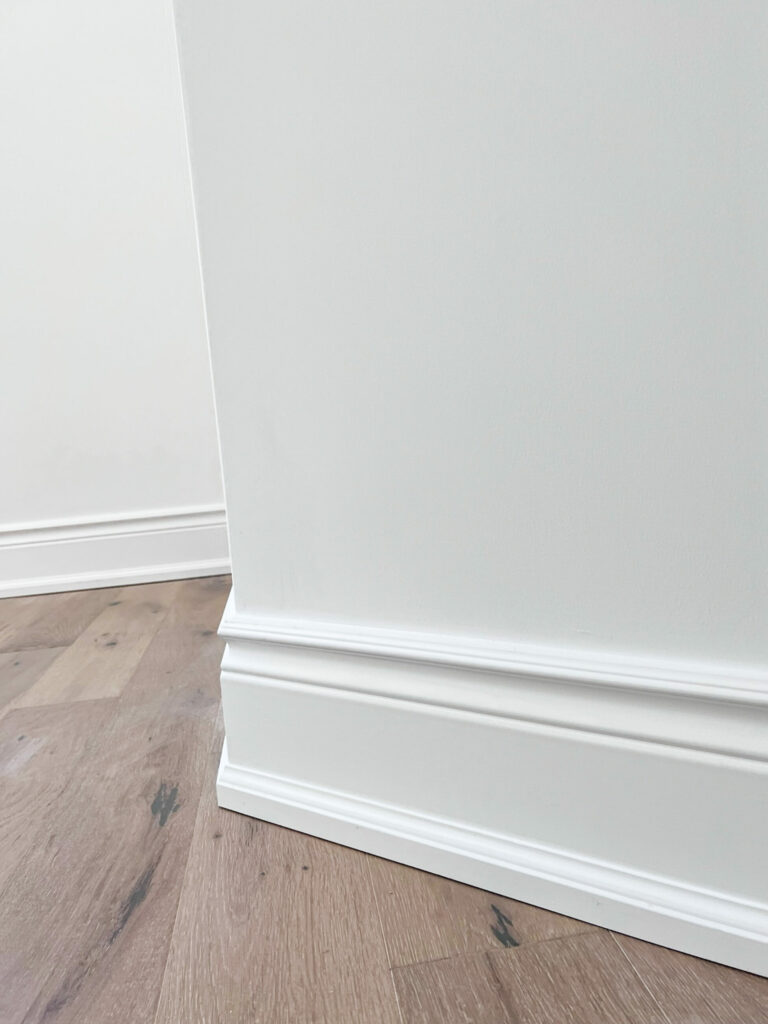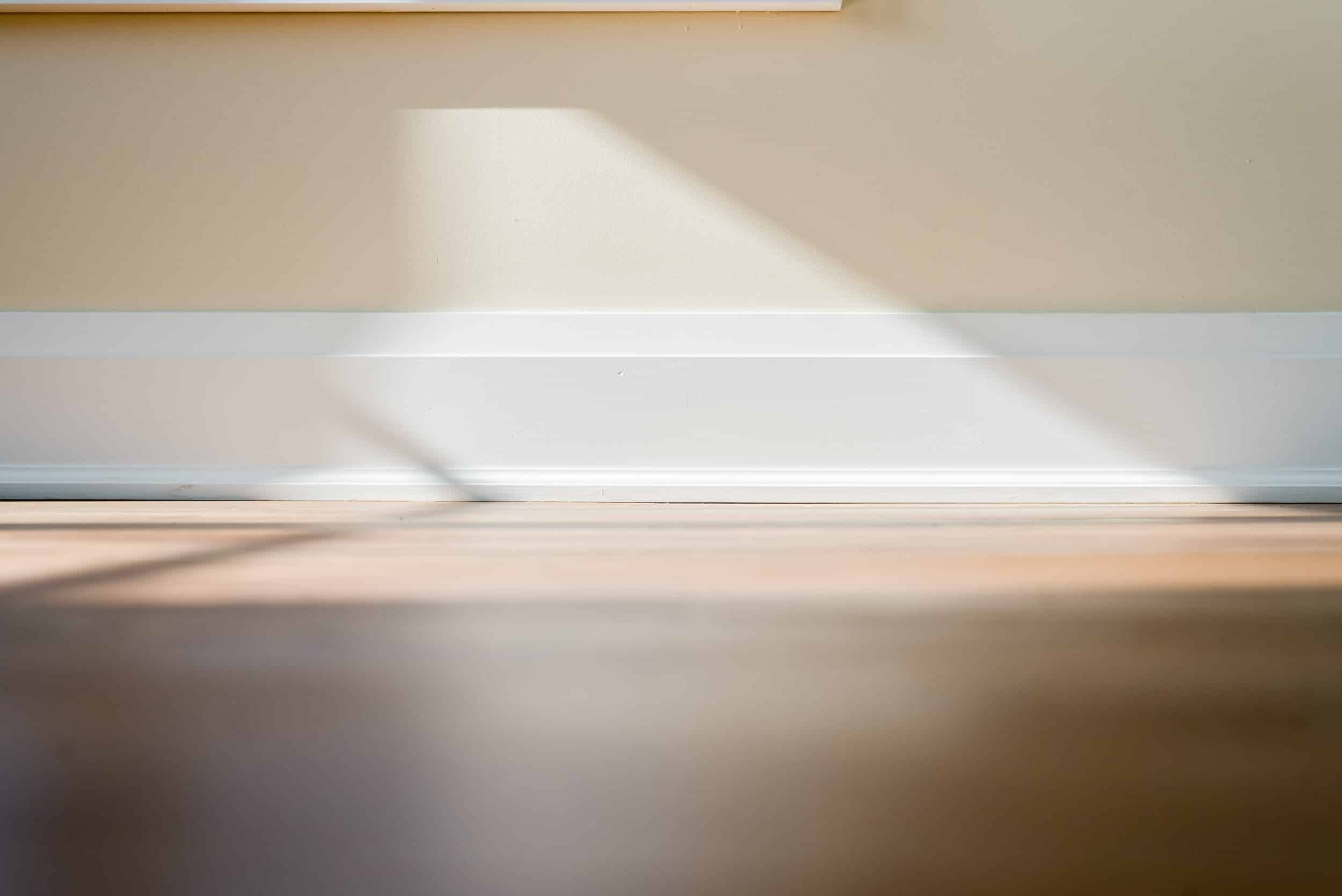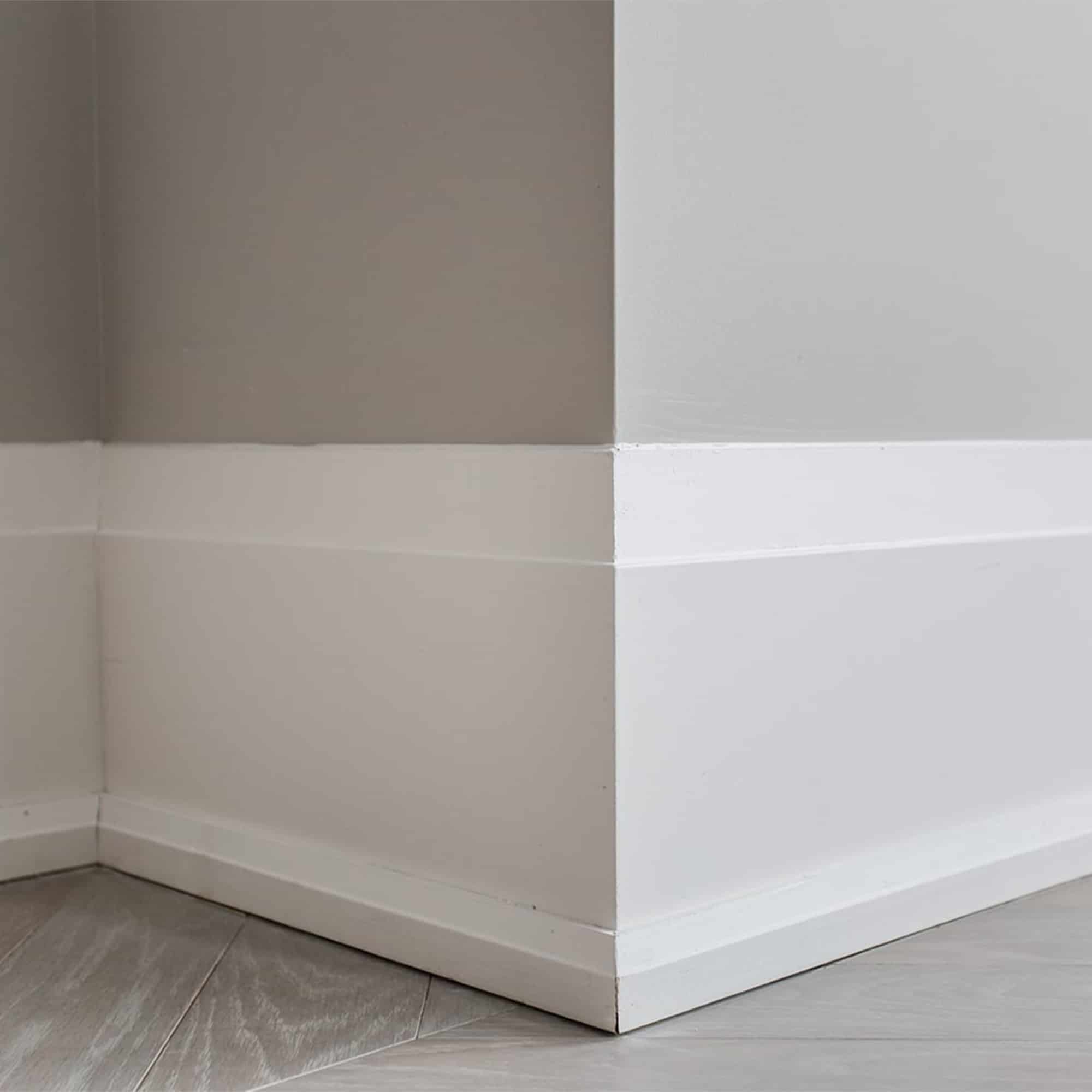
Custom Baseboard Trim
Update your home’s rooms and walls with top-quality custom baseboard trim.
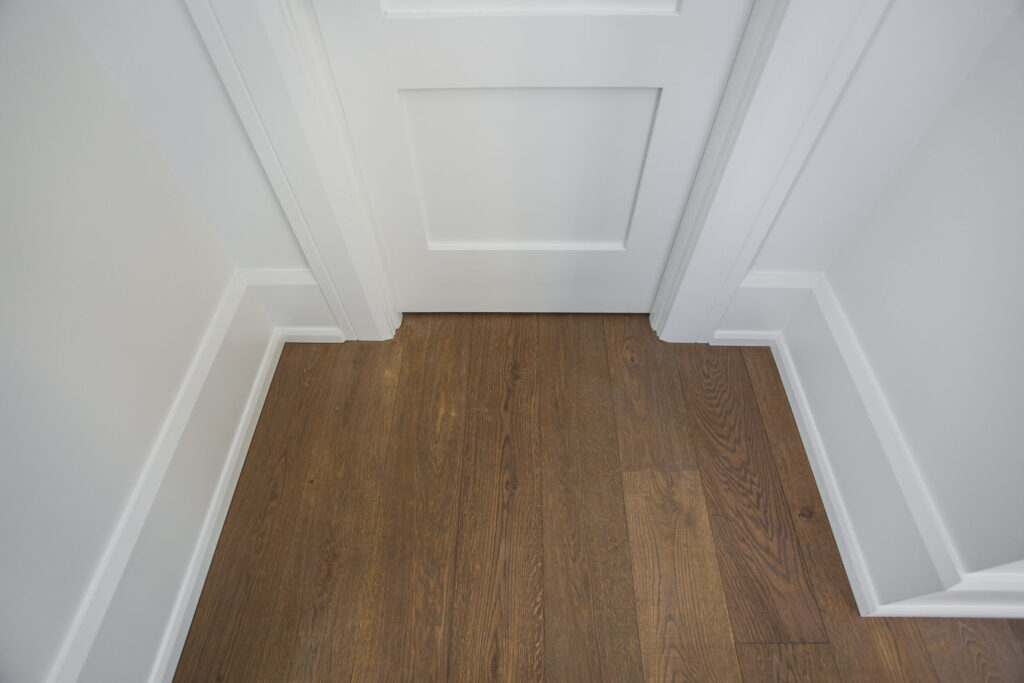
What is Baseboard Trim?
Baseboard trim is a type of trim moulding that runs along the bottom of interior walls where they meet the floor. As a decorative element, baseboard helps give your space a more polished and finished look, creating a clean transition between the wall and the floor. It comes in various styles from simple and modern to more detailed and ornate designs, allowing it to complement different interior design approaches.
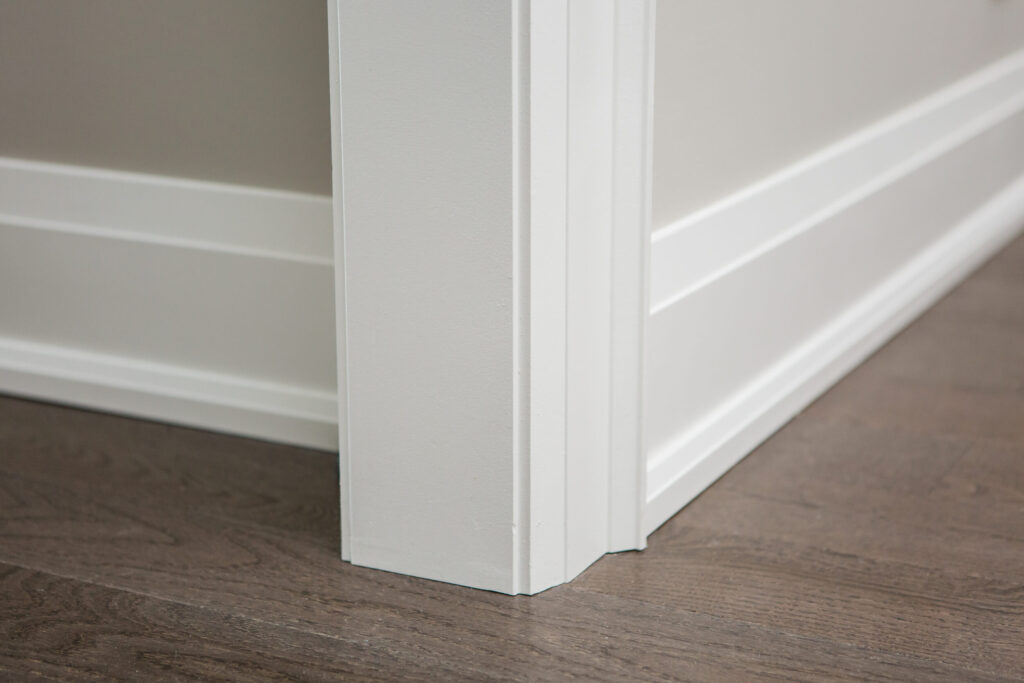
Benefits of Baseboard Moulding
Baseboard is found in nearly all modern homes in Canada. This popular trim feature is one of the most common elements used for interior design today. Often paired with other types of trim like crown moulding or chair rail, it helps to create a cohesive, layered look in your space.
One reason for baseboard trim’s popularity is its practicality. In addition to being a versatile aesthetic choice, baseboards also serve a functional purpose in contemporary home decor by preventing damage, covering imperfections, and more.
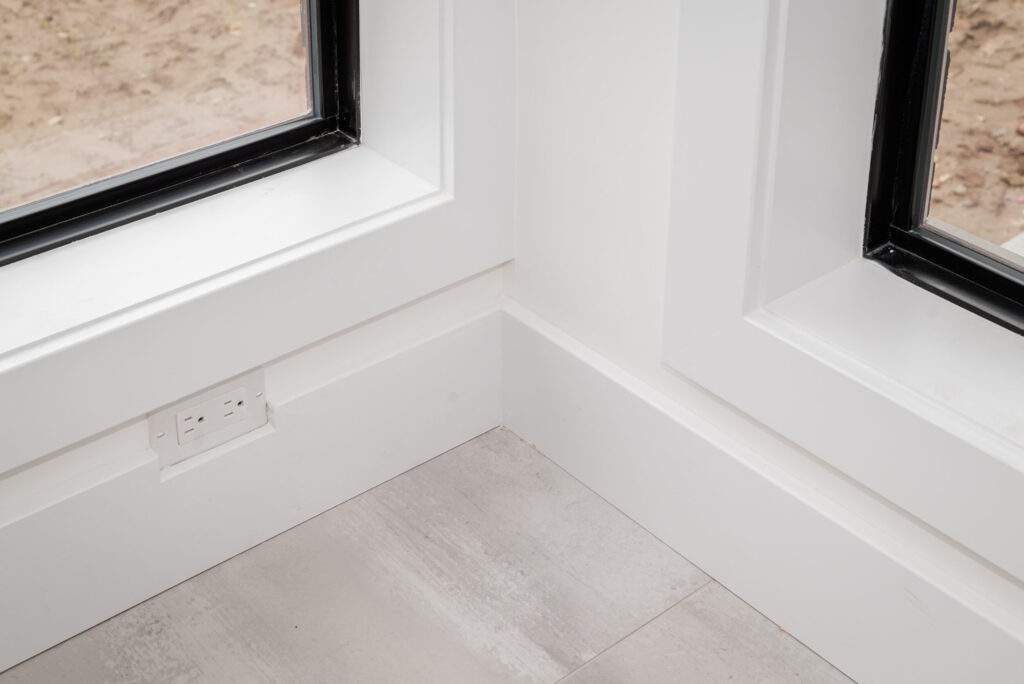
Aesthetic Versatility
Custom baseboard moulding can be tailored to suit any design theme, from minimalist profiles that blend seamlessly with modern spaces to more ornate, detailed mouldings that enhance traditional interiors. Baseboards can be painted to match the walls or left a neutral colour like white to stand out. This adaptability makes baseboard trim an essential element in elevating the overall look and feel of a room.
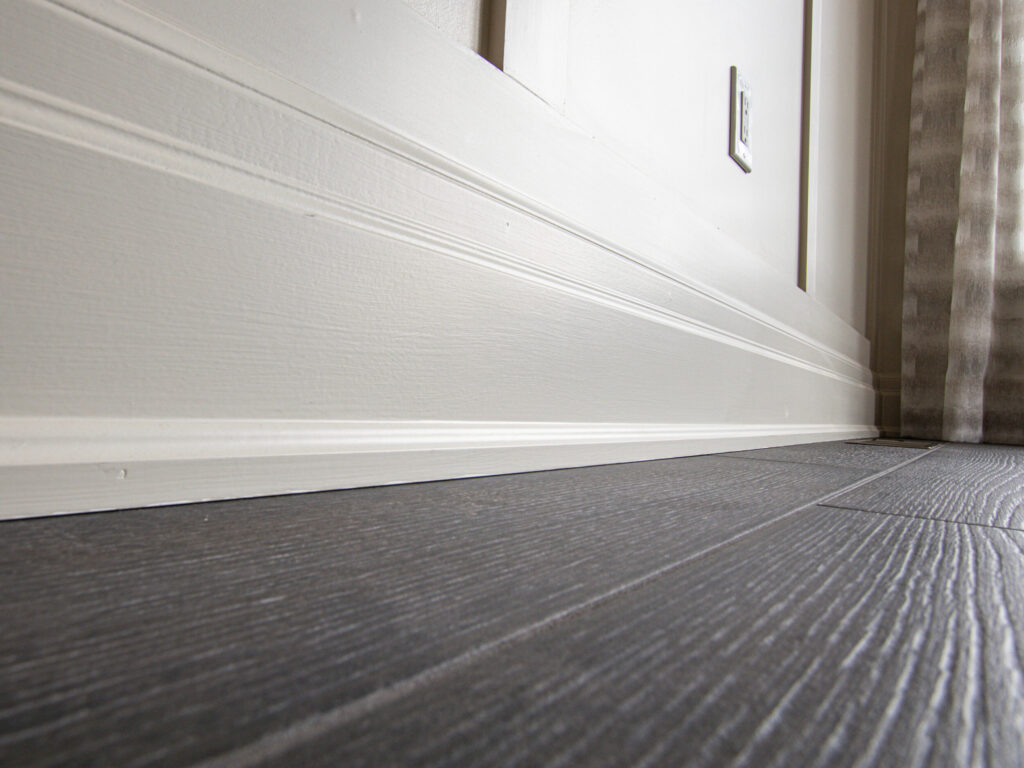
Prevent Damage & Cover Shrinkage
Baseboard moulding is used to cover the gap between the wall and the floor, protecting the wall from scuffs, bumps, and damage from furniture or foot traffic. In addition to protecting your interior walls, baseboards also hide any uneven edges or imperfections where the floor meets
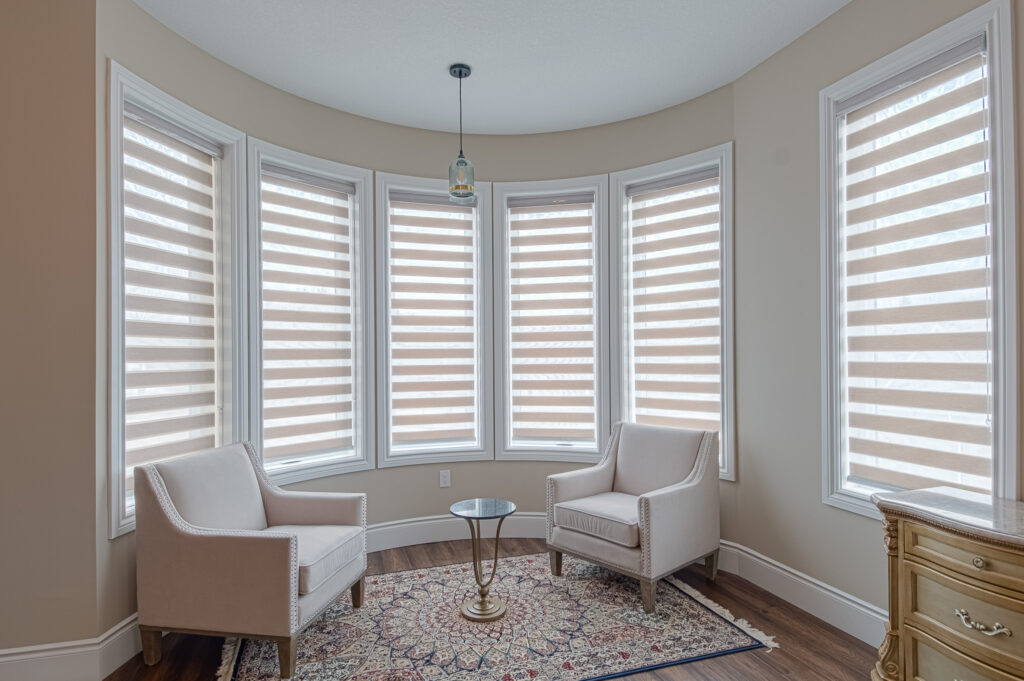
How to Choose Baseboard Height
Choosing the right baseboard height depends on several factors, including the size of the room, ceiling height, architectural style, and more.
Ceiling height is one of the top considerations when choosing what size of baseboard you want in your space. Low ceilings pair best with shorter baseboards to avoid overwhelming the room, while high ceilings are visually balanced by higher baseboards to complement the room’s scale.
Similarly, smaller rooms are better suited to shorter baseboards, as additional trim can make the space feel cramped. Large rooms are better able to accommodate tall baseboards. If your space also includes crown moulding or other trim features, you’ll want to balance their proportions as well.
The last element to consider when selecting baseboard height is the overall design style of your home. While it’s not a strict rule, more modern or minimalist homes tend to use shorter baseboards, which offers a clean look without drawing attention. Meanwhile, traditional or heritage-style designs tend to feature more ornamentation and detail, which can benefit from a higher baseboard profile.
Baseboard Styles
Click to view details about each baseboard style.


